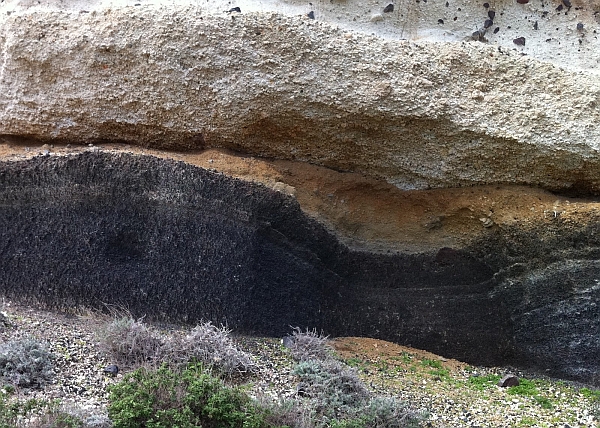Volcanic material on the Island of Santorini, Greece. Dark layer is composed of scoria or cinders. Light-colored layer is made of pumice.
Both pumice and scoria are made pretty much the same way. They are basically pieces of lava froth which have been thrown out of a volcano and landed as very porous volcanic rocks. It is mostly chemical composition that makes the difference between these two. Pumice contains more silica which makes its parent magma very viscous and resistant to release trapped gases. Scoria contains bigger bubbles which are easily visible to the naked eye. Scoria is much heavier than light-weight pumice that easily floats on water.
But what is the connection between all this and Atlantis? The Island of Santorini (or Thira) is the most probable location of the ancient Atlantis. This legendary island, if it really existed, was destroyed by the same forces which produced the scoria-pumice sequence shown below. Hence, these rocks may have taken part in destroying the mysterious Atlantis.
Take a look at a close-up photo of scoria from Etna volcano.
I also recommend to check out a gigapan of a pyroclastic sequence in Santorini.


It was very helpful.